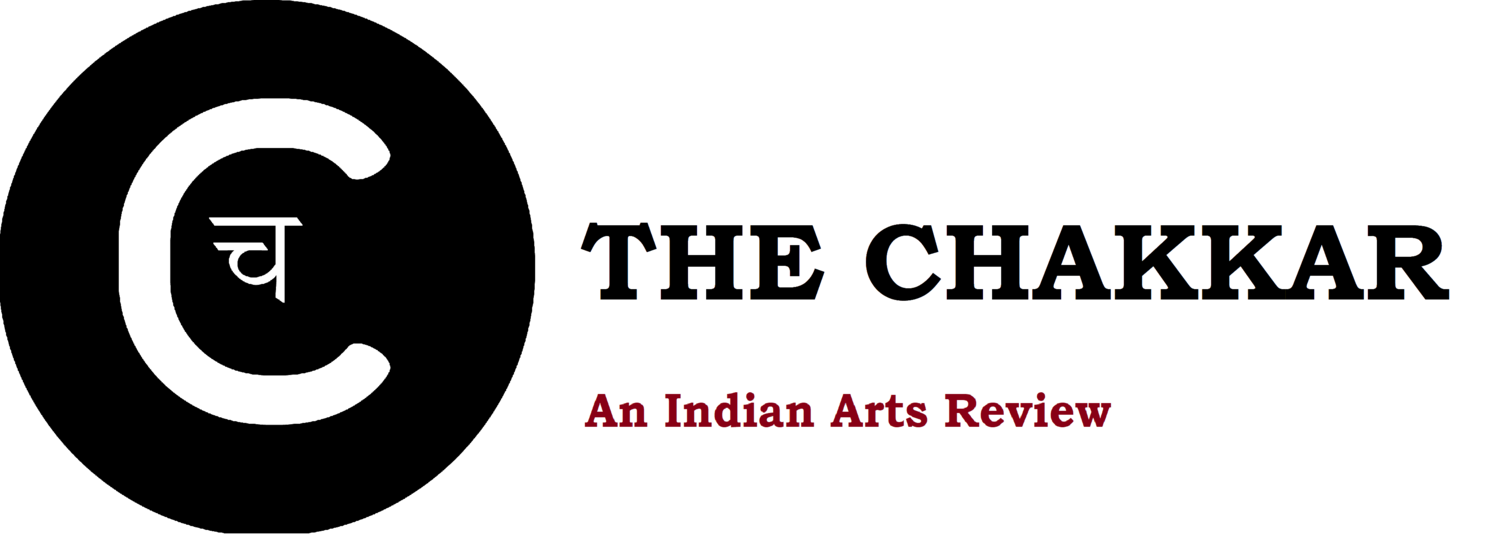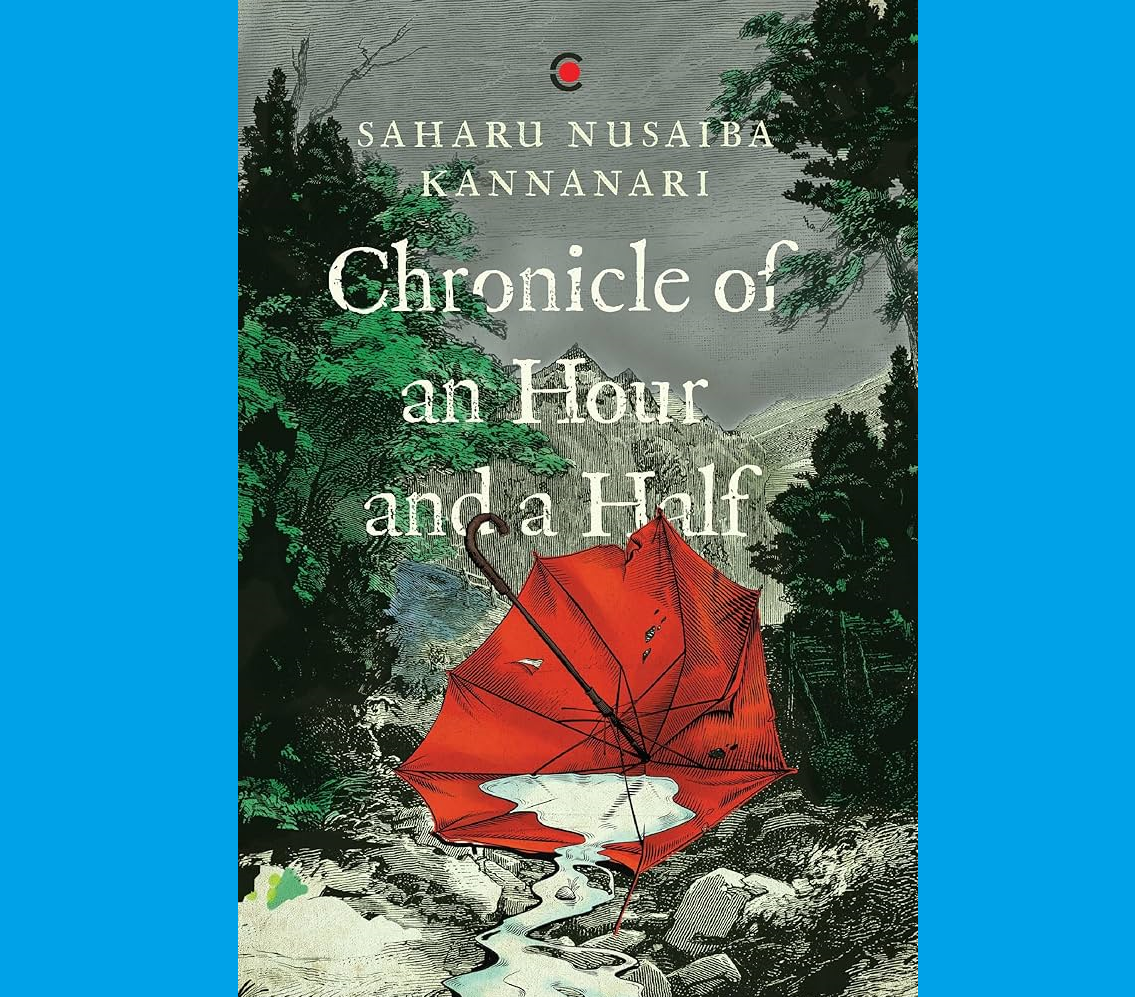A Chronicle of Mob Violence, Transgressions, and Social Media
Chronicle of An Hour and a Half (2024) establishes Saharu Nusaiba Kannanari as a writer fierce and loyal to his craft, as he invites the readers to reflect on the spectacle of violence in our technologically-powered society
Is there a line of transgression in our world, where everything could potentially be uploaded on the internet? Do instant messaging services like WhatsApp hold more power than human conscience, whose functioning is deeply questionable, vis-à-vis the impulse to make a spectacle out of violence?
Saharu Nusabia Kannanari wrestles with these questions in his debut novel Chronicle of An Hour and A Half (Context, 2024). With its structure borrowed from William Faulkner’s As I Lay Dying and its title an ode to García Márquez, the book begins with a chilling calmness that precedes a storm, until it paces up to leave the reader turning page after page in urgency. This short and cutting novel—narrated by a dozen characters—is filled with elegant passages and can be swallowed in one sitting.
The world of Chronicle is set in a small village of Vaiga in Kerala as it faces one of the worst storms in history. It’s been raining for six days without any respite. Cattle begin to float in the puddles, trees get bent and broken, electricity flickers, water leaks into the homes through cracked rooftops, and some people find themselves stuck inside the mosque. A rumour brews in this chaos of an illegitimate affair between Burhan and Reyhana. Burhan is a 25-year-old man, youngest of the four sons of Nabeesuma, a well-respected woman in the village. Reyhana is a 40-year-old married woman whose husband lives in the Gulf.
In the village’s designated WhatsApp group, locals project their perception of the situation at hand: A thousand messages are sent and received within a span of a few minutes, triggering the flow with the rage, rather than rational conversations.
When Saud—Reyhana’s elder brother-in-law—learns of the affair, he along with his four sons pays a visit to Burhan’s house to warn him to stay away from Reyhana. Instead of the couple, however, they find Nabeesuma and confront her. From a distance, a neighbour witnesses the scene—with unclear vision in the rain—and thus begins the rumour that Nabeesuma was slapped by these men.
Hearsay spreads, and, upon listening to this account, Imran—Nabeesuma’s elder son—sets out to avenge his mother’s honour. Ultimately, this turns into a fight between the two families in the marketplace.
A mob is more powerful than a man; it cannot be tamed, restricted, or stopped, just like the storm that lays men powerless within the confines of the four walls and leaky roofs. It makes individuals anon, but there is a clarity in its intention, a clarity that cannot be budged given the state of frenzy and urgency in which it performs.
Soon, a crowd gathers in the bazaar to see the fight, and then, turns into a violent mob moving towards Reyhana’s house. Here, they find and lynch Burhan, publicly. The videos of the fight and mob are shared across WhatsApp groups of the village to incite and invite more people, in what can only be described as a self-proclaimed holy duty of the mob to protect their own honour.
Incidents of lynching in India incited by WhatsApp rumour-mongering have become a topic of major news in recent years. Disinformation leading to violence is not new a phenomenon, and has taken place long before the advent of common digital communication. But there has been a frightening pace in modern times in how mobs are formed and suspected targets are lynched. With the assistance of services like WhatsApp, videos are quickly recorded and sent across to various groups.
Soon, impulse takes over conscience, and a mob that believes in its righteousness kills sensibility at the stem. Kannanari writes, “The crowd’s refusal to intervene was unusual because usually people broke up fights. Instead, they seemed to be cheering, wildly ecstatic, their hands thrown up in the air, recording videos and uploading them on Whatsapp.” Through his prose, the author calls for an introspection towards the desensitization of the ethics of a mob, of a community’s moral stance with respect to the technology that documents everything at expense of humanity.
In his 2005 book Final Solutions, Mahesh Dattani used the setting of communal violence in the 90s to bring forth the transferred resentment of various characters of a Hindu household, which becomes a shelter for two runaway Muslims (Bobby and Javed) on a turbulent night. A gathered mob outside threatens Ramnik Gandhi—the Hindu sheltering Bobby and Javed—to open the door and send the two Muslims out.
This mob doesn’t transgress or force their way inside—unlike the mob in Kannanari’s book, which breaks the door of Reyhana’s house, damages the property, and locks Reyhana. In Chronicle, Burhan is beaten and dragged out to the road. Kannanari’s mob believe that they have the voice of god, as if they are performing justice to save the reputation of the village, where husbands often leave their wives behind (and perhaps, vulnerable to other men) to work abroad.
The mob in Chronicle isn’t divided by religion or caste, as is often assumed to be the case. Here, it is united in its conviction of ‘us’ (the upholders of rules) vs ‘them’ (sinners bound to be punished). It is formed within the Muslim community of Vaiga, which is enraged at the affair—even more so because of Burhan and Reyhana’s age difference. There are some voices of sanity, reminding others the Prophet too was 25 when he married a much elder Khadija—but these voices are quickly shut down. One of the self-righteous characters in the book states, “Rules are meant to be followed and people have a responsibility to conform, to affirm the values that glue us together and not blow them up according to one’s whims. Scandals shock and attract and reaction follows, Burhan and Reyhana aught to have known this.”
Juxtaposing the mobs in Dattani’s and Kannanari’s books, one is bound to ask, would Dattani’s mob too have acted like that of Kannanari’s, were they being consistently incited through the rapid provocations of social media? Or would Kannanari’s mob have dissipated with passing time in the absence of modern technology?
A mob is more powerful than a man; it cannot be tamed, restricted, or stopped, just like the storm that lays men powerless within the confines of the four walls and leaky roofs. It makes individuals anon, but there is a clarity in its intention, a clarity that cannot be budged given the state of frenzy and urgency in which it performs.
The transgression of the mob isn’t deprived of patriarchy. This mob is made up of men, young and old. Women are seen on the sidelines, marching on different path to glimpse at the ensuing chaos. They are passive participants, either unaware of their power to intervene, or resigned in their powerlessness.
At the same time, women who run the household aren’t shy and tamed housewives. They have opinions, especially about their husbands who are useless, jobless, ‘atheists’, rumourmongers, and work in the Gulf. They make their displeasure known to their husbands. They have a voice within the household, their arena.
Still, the men tend to transgress into their lives, be it by constantly impregnating them, or by becoming the self-proclaimed saviours of honour of their house and society. It is fittingly put in Nabeesuma’s words, as she describes her unemployed sons for the phantom slap. “My four sons were fighting four men in the middle of the Bazaar to avenge a slap I never received. A vengeance I never sought.” This is one of many such instances where the women call out the hollow acts of protection performed by men within the patriarchy.
Through the eyes of the women of the village, the men of Vaiga can’t be saved. Through the eyes of the author, there’s no saving of the women’s autonomy.
This begs the questions: Does technology affect men and women differently? Can technology not condense the public and private place discourse? Are our patriarchal gender roles and spaces so divided that even access to technology cannot lessen the gap? This is not to say that women too should have been a part of the mob, but rather, a question of their sensibilities falling short in front of the insecurities of men.
Amidst these insecure men attempting to establish their power through gossip, rumour-mongering, or stirring up conflict—activities generally associated with women in the society—there’s a glimpse of hope in Damu, who presents a conscience yet to be disrupted by manliness that he might perform later in life. Damu is described as a small boy, different from other kids. He is slow in everything but Math. He feels guilty to the extent that he even feels responsible for Burhan’s death. His friend, June, assures him that things would have happened anyway as they did—the only case of comfort and compassion between the genders in the book.
Kannanari’s prose doesn’t dilly-dally. It’s precise and sharp despite the confessional self-justification of multiple characters who narrate this chronicle of mob lynching. Each word is a marvel, placed with caution and accuracy. With differing perspectives, the debut author presents the nuances in the tone of women who speak with brutal honesty, curious children who are left out of the action, repressed youngsters fighting the call of the mob, and the very masculine men who act out their insecurities. Moreover, the author doesn’t resign to political correctness: his characters are as human as human beings can be in their animosity, including those who harbour the darkest thoughts of rape.
Chronicle of An Hour and a Half establishes Saharu Nusaiba Kannanari as a writer fierce and loyal to his craft, as he invites the readers to reflect on the spectacle of violence in our technologically-powered society.
***
Akankshya Abismruta is a creative writer and independent book reviewer based in Sambalpur, Odisha. Her reviews are published or are forthcoming on Scroll, Purple Pencil Project, Feminism In India, Women's Web, and Bookish Santa, Asian Review of Books, and Deccan Herald. You can find her on Instagram: @geekyliterati and Twitter: @geekyliterati.

